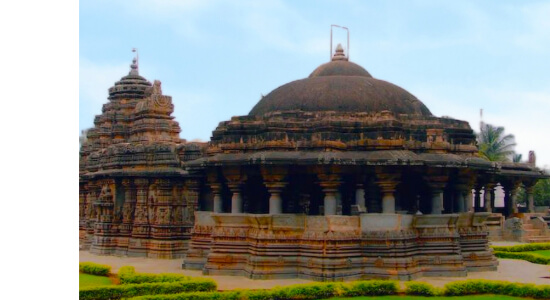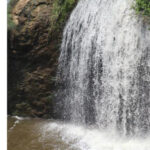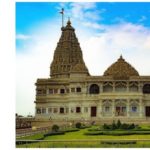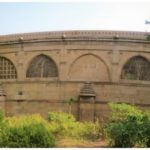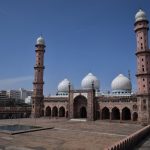Temple architecture scaled the zenith of aesthetic art and design during the Hoysala Empire. Here are 5 lesser known Hoysala temples of Karnataka. These ancient temples are a glowing tribute to the artistry and craftsmanship of the temple builders of the Hoysala Empire.
Table of Contents
Lesser Known Hoysala Temples

Hoysala architecture weaved its magic as temples were built by the rulers of the Hoysala Empire who seemed to be on a temple building spree, between the 11th and 14th centuries. The earliest Hoysala temples of Karnataka were built at Talakad, while Hoysala temple architecture scaled the pinnacle of perfection at Belur and Halebid. The last of the Hoysala temples to be built was the Somanathapura temple.
5 Lesser Known Hoysala Temples of Karnataka | Hoysala Architecture
During their reign which lasted from the 10th to the 14th century, the Hoysala kings built more than a thousand temples. Out of these a few hundred have survived the onslaught of nature and the effects of time. Some of the temples are well known and are important heritage destinations, while there are many that are lesser known, here are 5 lesser known Hoysala Temples of Karnataka.
Keerthi Narayana Temple In Talakadu – Lesser Known Hoysala Temples of Karnataka

At a distance of about 133 kilometres from the city of Bangalore is located Talakadu. It is a town that is famous for a curse on the Mysore King because of which it is believed that the town was submerged in sand. Talakadu in many ways is the nursery of Hoysala temple architecture. The earliest Hoysala temples were built here and these numbered about 30, most of them are in ruins lying under mounds of sand. Most of the temples were dedicated to Shiva. One of the lone temples to Lord Vishnu is the Keerthi Narayana Temple.
The Keerthi Narayana Temple was built by the Hoysala King, Vishnu Vardhan in the early part of the 12th century. The beautiful temple which has a standing idol of Vishnu gives glimpses of the heights that Hoysala temple architecture was destined to achieve in the years to come. The temple has been built in soapstone and the influence of Chalukyan temple architecture can be seen in its design.
Distance From Bangalore – 133 Kilometres
Ishvara Temple In Arasikere – Lesser Known Hoysala Temples of Karnataka

One of the earlier examples of Hoysala temple architecture is the Ishvara temple of Arasikere in the Hassan district of Karnataka. The temple has a beautiful and unique circular plan. The temple is believed to have been built in the 13th century during the reign of the Hoysala king Narasimha II. There is a Shiv Ling in the sanctum which in ancient times was known as Kattamesvara.
The Ishvara temple of Arasikere grabs your attention, by its exquisite ground plan, though in size it is quite modest. This temple too has been built using soapstone. Beautiful carvings on the door of the sanctum are a visual delight.
Distance From Bangalore – 178 Kilometres
Lakshmi Narasimha Temple In Nuggehalli – Excellent Example of Hoysala Temple Architecture

The Lakshmi Narasimha Temple in Nuggehalli is another excellent example of early Hoysala temple architecture. Nuggehalli is located in the Hassan district of Karnataka. The Lakshmi Narasimha temple was built by a commander of the Hoysala kingdom named Bommanna Dandanayaka, in the year 1246 CE, during the reign of the Hoysala king Vira Someshwara.
The Lakshmi Narasimha temple is an ornate temple with three towers (trikuta), and consists of three shrines that are placed around a central mandapa. The three shrines have the images of Lakshmi Narasimha, Venugopala, and Keshava, all different forms or manifestations of Lord Vishnu. The Lakshmi Narasimha temple has been built using soapstone.
Distance From Bangalore – 141 Kilometres
Nageshvara-Chennakeshava Temple Complex In Mosale

This is a unique twin temple complex in the Mosale town of the Hassan district of Karnataka. The temple is unique in that there are two almost identical temples to Shiva and Vishnu. The temples stand adjacent to each other like twins born of stone.
The exact year when this temple complex was built is not known, but historians are of the view that it was built during the 13th century, before 1250 CE. The temple is a unique fusion of elements of North Indian and South Indian architectural styles. One of the striking features of the temples is the exquisitely carved ceilings. The outer walls too are embellished with beautiful carvings. Another interesting fact is that some of the images on the panels of the outer walls have been signed by the craftsmen who created them.
Distance From Bangalore – 186 Kilometres
Chennakeshava Temple In Somanathapura – Lesser Known Hoysala Temples of Karnataka

The Chennakeshava Temple of Somanathapura in the Mysuru district of Karnataka is believed to be the last of the temples built by the Hoysala rulers. In many ways, this temple is a model of the Hoysala temple architecture. The Cheenakeshava temple of Somanathapura is believed to have been consecrated in the year 1258 CE by a commander of the Hoysala empire, named Somanatha Dandanayaka. Narasimha III was the ruler of the Hoysala Empire at that time.
The Chennakeshava temple of Somanathapura stands out with its exquisite sculptures and the carvings on its outer walls. Scenes from the great epics Ramayana and Mahabharata, and from the Bhagavata Purana are carved with painstaking precision on the outer walls of the temple. There are three shrines in the temple adjacent to each other. One of the shrines which is dedicated to Vishnu as Keshava has its idol missing. The other two shrines have the idols of Vishnu in the forms of Venugopala, and Janardhana.
Distance From Bangalore – 133 Kilometres
These lesser known Hoysala temples of Karnataka are just the tip of the iceberg, there must be hundreds of such temples across Karnataka, that remain buried under the sands of time. These temples sing a perpetual paean the wizardry of ancient Hoysala architecture. We hope you liked our post about some of the amazing Hoysala temples and your interest is aroused to explore the Hoysala temples of Karnataka. Please do not forget to subscribe to our blog for more posts like this, and do connect with us on Instagram and Twitter.

Thanks for visiting our site nirvandiaries.com and taking the time to read this post.
If you wish to collaborate or work with us then reach us at [email protected]
We’d love it if you’d comment by sharing your thoughts on this post and share this post on social media and with your friends.
Follow our journey on our social media channels:
Facebook Twitter Instagram Pinterest
